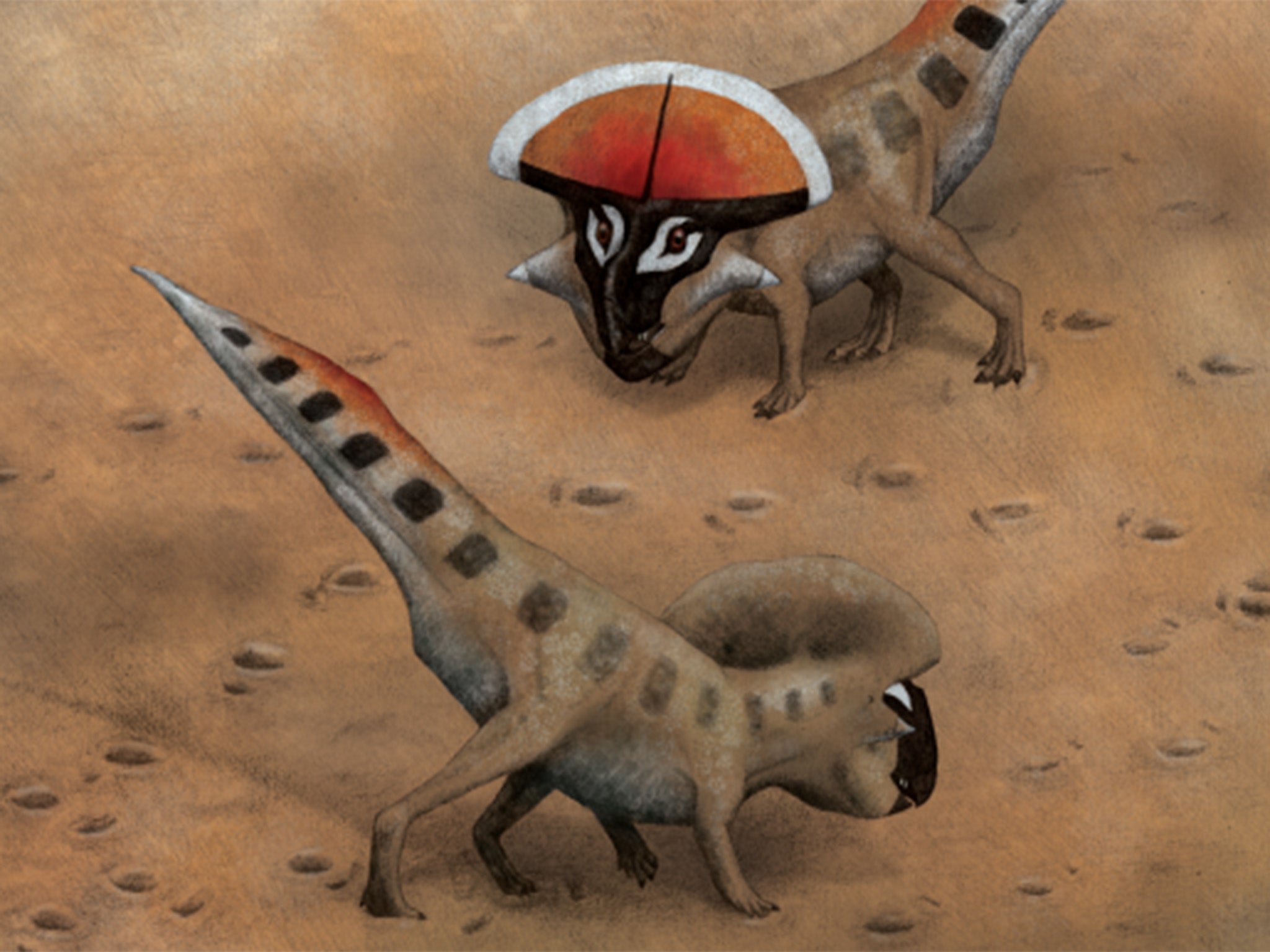The horniest dinosaurs were the sexiest, scientists claim
Scientists analyzing dinosaur fossils believe they've figured out why some had cumbersome horns and frills

Your support helps us to tell the story
From reproductive rights to climate change to Big Tech, The Independent is on the ground when the story is developing. Whether it's investigating the financials of Elon Musk's pro-Trump PAC or producing our latest documentary, 'The A Word', which shines a light on the American women fighting for reproductive rights, we know how important it is to parse out the facts from the messaging.
At such a critical moment in US history, we need reporters on the ground. Your donation allows us to keep sending journalists to speak to both sides of the story.
The Independent is trusted by Americans across the entire political spectrum. And unlike many other quality news outlets, we choose not to lock Americans out of our reporting and analysis with paywalls. We believe quality journalism should be available to everyone, paid for by those who can afford it.
Your support makes all the difference.Scientists analyzing dinosaur fossils believe they've figured out why some had cumbersome horns and frills: to attract mates.
The data offer support for the theory "that these features were under selection as socio-sexual dominance signals," concluded researchers from Queen Mary University of London, who published their findings this month in the journal Palaeontologia Electronica.
For the study, the researchers analyzed 37 specimens of Protoceratops andrewsi of all ages. The sheep-sized ceratopsian frilled dinosaur belongs to the same group as the triceratops.
They found that the dinosaurs' frills grew disproportionately larger to their bodies and wider as they got older, suggesting the frills served a function only adults would need -- such as signaling to a mate.
"Palaeontologists have long suspected that many of the strange features we see in dinosaurs were linked to sexual display and social dominance, but this is very hard to show," lead author David Hone noted in a release. "The growth pattern we see in Protoceratops matches that seen for signaling structures in numerous different living species and forms a coherent pattern from very young animals right through to large adults."
But why these dinosaurs had such outlandish and bizarre structures is by no means a settled question, and some have pushed back on linking it to sexual selection.
Much of the debate once centered on the usefulness of frills, horns and other structures for combat. More recently, some scientists have argued these structures were primarily useful in recognizing others belonging to the same species.
Paleontologist Andrew Farke at the Raymond M. Alf Museum of Paleontology in California told Live Science that this new study could point to the frills playing some role in reproduction. But, he added: "It's also likely that it could just be for how old are you relative to the next animal, so who gets to the food first?"
Many animals today have odd features that primarily serve as ways to attract mates. Co-author Rob Knell said in the release that "sexual selection is a massively important force in shaping biodiversity both now and in the past."
"Not only does sexual selection account for most of the stranger, prettier and more impressive features that we see in the animal kingdom, it also seems to play a part in determining how new species arise," Knell said.
The Washington Post
Join our commenting forum
Join thought-provoking conversations, follow other Independent readers and see their replies
Comments